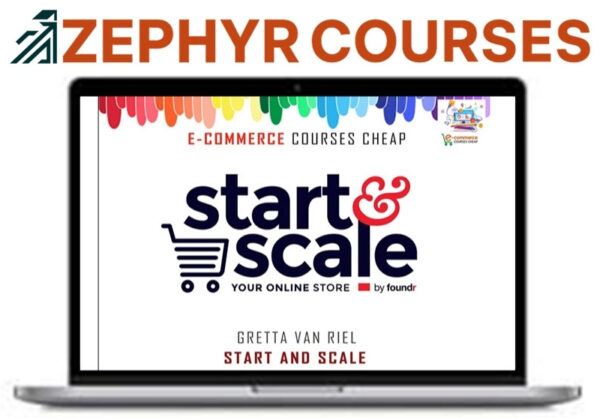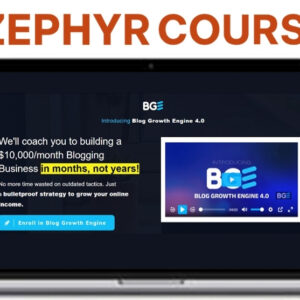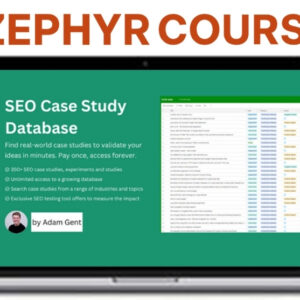Description
Understanding the E-Commerce Landscape
As you enter the world of e-commerce, understanding its evolving landscape is vital for building a successful online store. You’ll need to keep up with e-commerce trends like the surge in mobile shopping and the growing importance of digital payments.
Analyzing customer behavior helps you tailor your store’s experience, while monitoring market competition guarantees your business stays relevant. Exploring niche markets can help you carve out a unique space and attract loyal customers.
Prioritizing online security builds trust, which is essential for consumer loyalty. You must also evaluate fulfillment options and international shipping, since fast, reliable delivery impacts customer satisfaction.
Finding Your Winning Product Idea
Once you understand the e-commerce landscape, the next step is to pinpoint a product that stands out in the market. Start by tracking product trends and leveraging market research to spot opportunities.
Immerse yourself in competitor analysis to see what’s working for others and identify gaps you can fill. Focus on niche identification—find a specific, underserved audience with clear needs.
Listen closely to customer feedback; it often reveals pain points or desires not yet addressed. Your product should have a unique selling proposition that makes it memorable and desirable.
Consider pricing strategies early, ensuring profitability while staying competitive. Use product testing to refine your idea and gauge appeal.
Audience targeting and industry insights will guide you toward a product idea with genuine potential for success.
Validating Your Product Demand
Before you invest time and money into launching your product, you need solid proof that customers actually want it. Start with thorough market research to understand your target audience and competitors.
Use customer feedback to refine your idea, and conduct competitive analysis to see how similar products perform. Don’t skip trend forecasting; it’ll help you spot shifts in demand early.
Validate your concept by pilot testing with a small segment of your audience. Focus on niche identification and audience segmentation to guarantee you’re reaching the right people.
Demand forecasting and realistic sales projections guide your expectations and planning. Embrace product iteration—improve based on real insights.
Here’s how you can validate demand:
- Conduct targeted market research
- Launch pilot testing for feedback
- Analyze competitor performance
Sourcing and Manufacturing Essentials
Whether you’re creating a unique product or curating items for your store, choosing the right sourcing and manufacturing partners sets the foundation for your business’s success.
Start by developing clear sourcing strategies that align with your budget and values. Conduct thorough cost analysis to guarantee your margins remain healthy, and prioritize ethical sourcing to build long-term trust.
Request product sampling from potential manufacturing partners to assess quality control standards before committing. Establish strong vendor relationships—clear communication helps avoid costly misunderstandings.
Keep a close eye on production timelines, as delays can disrupt your supply chain and inventory management. Regularly review your suppliers’ practices to make sure they meet your quality and ethical expectations.
With careful planning, you’ll streamline operations and minimize risks from the start.
Building a Standout Brand Identity
Having reliable sourcing and manufacturing in place gives you the confidence to focus on what sets your store apart—your brand identity.
You’ll want to craft a brand personality that genuinely resonates with your target audience and clearly communicates your unique value. Effective brand messaging, paired with a memorable visual identity, creates an emotional connection and positions you strategically in the market.
Consider these essential steps:
- Define your brand personality and market positioning to guarantee your messaging speaks directly to your target audience.
- Design a cohesive visual identity—including thoughtful logo design and color psychology—to reinforce brand consistency.
- Communicate your unique value with every touchpoint to deepen emotional connection and build lasting loyalty.
With a standout brand identity, you’ll empower your store to thrive.
Creating Your Online Storefront
Now that your brand identity is set, you’ll want to choose the right e-commerce platform to bring your store to life.
Focus on designing a layout that guides visitors to buy and makes shopping easy.
Don’t forget to streamline your checkout process so customers complete their purchases quickly and smoothly.
Choosing E-commerce Platforms
How do you pick the right e-commerce platform when there are so many to choose from? Start by evaluating what matters most for your store’s success.
Consider platform features like scalability options, mobile responsiveness, and customization flexibility. Compare pricing models to guarantee you’re not overpaying for features you don’t need, and prioritize strong customer support and security measures for peace of mind.
You’ll also want to look at integration capabilities for shipping, analytics, and marketplace integrations. A seamless user experience is vital—not just for you, but for your customers too.
Here’s a quick checklist:
- Assess platform features, scalability options, and integration capabilities.
- Compare pricing models, mobile responsiveness, and security measures.
- Evaluate customer support, user experience, and customization flexibility.
Choose a platform that aligns with your store’s growth.
Designing Conversion-Focused Layouts
A well-designed storefront can make all the difference between a visitor and a customer. Focus on user experience design by prioritizing layout optimization and mobile responsiveness, ensuring your store looks great on any device.
Use color psychology to guide emotions and highlight calls to action. Establish a clear visual hierarchy so shoppers easily scan and understand your offers.
Map out the user journey, from first click to product exploration, making navigation simplicity a top priority. Incorporate interactive elements like hover effects or quick views to boost engagement without overwhelming.
Always use trust signals—think reviews, secure payment icons, or guarantees—to reassure buyers. Don’t guess what works; conduct A/B testing to refine every aspect, optimizing your layout for maximum conversions and a seamless shopping experience.
Streamlining Checkout Process
Once your storefront’s layout captures attention, it’s time to guarantee that shoppers can complete their purchases without frustration.
Streamlining your checkout process is essential for turning browsers into buyers. Use checkout optimization techniques to minimize steps and reduce cart abandonment. User experience enhancements assure every action feels intuitive and efficient.
Focus on these three essentials:
- Simplify forms: Only ask for necessary information, and enable autofill to quicken entry.
- Offer guest checkout: Don’t force account creation. Allow shoppers to buy without extra hurdles.
- Provide multiple payment options: Include digital wallets and local payment methods to speed up transactions.
Crafting High-Converting Product Pages
To boost your sales, you need product pages that capture attention and build trust.
Focus on writing compelling product descriptions, adding persuasive calls-to-action, and showcasing high-quality visuals.
Let’s look at how each of these elements turns visitors into buyers.
Compelling Product Descriptions
While shoppers can’t physically touch or try your products online, your product descriptions bridge that gap. You need to capture attention with compelling storytelling and a persuasive tone tailored to your target audience.
Start by highlighting unique selling points and weaving in customer benefits alongside product features. Use sensory language and descriptive imagery to help shoppers imagine the look, feel, and experience of your product. Make sure your brand voice shines through, creating a cohesive and trustworthy vibe.
Here’s how to make your descriptions truly stand out:
- Appeal to emotions: Use emotional triggers to connect with your audience’s desires or solve their problems.
- Show, don’t just tell: Paint vivid word pictures with sensory language.
- Focus on benefits: Clearly explain how your product improves customers’ lives.
Persuasive Call-to-Action
A single, well-crafted call-to-action (CTA) can transform a casual browser into a committed customer. You need to guide your shopper’s next step using persuasive language that’s clear, direct, and focused on benefits.
Instead of generic phrases like “Submit,” opt for action-driven prompts such as “Add to Cart” or “Get Yours Now.” Don’t hesitate to incorporate urgency tactics—words like “Limited Stock,” “Only 2 Left,” or “Sale Ends Tonight” nudge visitors to act fast.
Place your CTA button where it’s impossible to miss, and make sure it stands out visually from the rest of the page. Every word and design choice should work together to create a seamless experience that compels your visitor to click and convert.
High-Quality Visuals
Even before customers read a product description, they judge your store by the quality of its images. High-quality visuals instantly boost aesthetic appeal and trust, making your product pages more compelling.
You should aim for visual consistency and branding coherence by sticking to a specific style, color psychology, and layout in both product photography and graphic design. Optimized images guarantee fast load times and a seamless user experience.
To elevate your product pages, focus on these essentials:
- Use professional product photography and video content for authentic visual storytelling.
- Maintain branding coherence and visual consistency across all images and graphics.
- Prioritize image optimization—compress files without losing quality to enhance site speed.
Every visual choice influences customer perception and conversion rates.
Developing a Launch Strategy
Before you open your virtual doors, you need a clear launch strategy to generate buzz and drive your first sales. Start with a pre launch checklist to guarantee every detail’s covered.
Dive deep into target audience analysis and market segmentation, so your message hits the right people. Use timeline planning to map out each step, from influencer outreach to brand storytelling.
Your promotional tactics should align with your unique value, building excitement and anticipation. Integrate social proof strategies, such as testimonials and early reviews, to foster trust before launch day.
On launch day, engage visitors with live events or special offers.
Afterward, don’t forget a post launch evaluation—analyzing what worked and what didn’t helps you refine your approach for future growth.
Mastering Social Media Marketing
To grow your online store, you’ll need a strong social media game.
Focus on building engaging content strategies that keep your audience interested and coming back for more.
Team up with the right influencers to boost your reach and credibility quickly.
Building Engaging Content Strategies
While social media platforms constantly evolve, mastering engaging content strategies remains essential for your online store’s growth. You need a blend of creativity and consistency to stand out.
Start by embracing content marketing that leverages storytelling techniques—share your brand’s journey and customer stories through visual storytelling and video marketing. Use blog creation and interactive content to spark audience engagement and invite conversation.
Here’s how you can elevate your social media strategies:
- Repurpose content across formats—turn blog posts into videos or infographics.
- Feature user generated content to build trust and authenticity with your audience.
- Use interactive content, like polls or quizzes, to boost engagement and learn about your customers.
Focus on these tactics and you’ll keep your audience engaged and invested.
Leveraging Influencer Partnerships
As you refine your content strategies and foster audience engagement, partnering with influencers can quickly amplify your online store’s reach.
Start with careful influencer selection—choose niche influencers whose followers show strong audience alignment with your brand. Prioritize partnership strategies that focus on content collaboration and uphold brand authenticity.
Effective campaign management involves clear deliverables, timelines, and ongoing communication, ensuring both sides understand expectations.
Monitor engagement metrics and use performance tracking tools to evaluate ROI from each influencer campaign. You’ll want to adjust your approach based on what drives the most conversions and authentic engagement.
Invest in relationship building with influencers, not just one-off promotions, to foster trust and long-term growth.
Leveraging Influencer Partnerships
Although traditional advertising still plays a role in e-commerce, influencer partnerships now offer a powerful way to build trust and reach targeted audiences.
With influencer marketing, you can tap into authentic content creation, leverage social proof, and drive audience engagement that feels organic. Start by identifying niche influencers aligned with your brand values.
Focus on relationship building and partnership strategies that go beyond one-off posts—think long-term brand collaborations or affiliate programs to maximize impact.
To leverage influencer partnerships effectively:
- Choose the right influencers: Prioritize authenticity and relevance to your target audience.
- Track your campaigns: Use campaign tracking tools to monitor performance and ROI.
- Foster ongoing relationships: Nurture connections for future collaborations and maximize trust.
These steps help you harness influencer power for scalable growth.
Building and Growing Your Email List
A robust email list gives you direct access to customers who are genuinely interested in your products. Start by creating irresistible lead magnets, like discounts or exclusive content, to encourage sign-ups.
Use list segmentation to organize subscribers based on behavior or preferences, so your email marketing feels personal and relevant. Launch regular newsletter campaigns to keep your audience informed and engaged, sharing updates, tips, and offers tailored to their interests.
Enhance subscriber engagement by testing content and subject lines, and always respond promptly to feedback. Employ automation strategies—such as welcome sequences and abandoned cart reminders—to nurture leads and drive conversions.
Focus on audience targeting for higher open rates, and implement proven retention tactics to keep subscribers loyal and coming back for more.
Running Profitable Paid Advertising Campaigns
When you’re ready to accelerate growth, paid advertising offers a direct path to reaching new customers and boosting sales. Start by defining your target audience and use audience segmentation to guarantee your ads reach the right people.
Choose your platform selection wisely—focus on where your audience spends their time. Craft compelling ad creatives and write persuasive ad copywriting to capture attention. Allocate your budget strategically and use bidding strategies that maximize return.
For ongoing success, prioritize:
- Campaign optimization: Continuously refine based on performance tracking and conversion tracking data.
- A/B testing: Test different ad creatives and copy to discover what resonates best.
- Retargeting strategies: Re-engage visitors who didn’t convert on their first visit.
Monitor results closely and adapt your approach for profitable campaigns.
Managing Orders and Customer Experience
While your marketing efforts drive traffic and sales, your store’s reputation depends on how smoothly you manage orders and deliver customer service.
Prioritize efficient order fulfillment to guarantee customers receive their purchases promptly. Offer multiple shipping options and provide clear order tracking so shoppers always know where their packages are.
Effective customer support is vital—respond quickly to questions or concerns, and handle return management with transparency and fairness. By making returns hassle-free, you’ll build trust and encourage customer retention.
Establish loyalty programs to reward repeat buyers and incentivize future purchases.
Finally, set up feedback loops to gather insights directly from customers, using their input to refine your processes. A seamless post-purchase experience strengthens your brand and turns first-time buyers into loyal fans.
Analyzing and Optimizing Store Performance
To keep your store growing, you need to track key performance metrics like traffic, sales, and average order value.
By focusing on your conversion rate, you’ll spot where shoppers drop off and find ways to turn more visitors into customers.
Let’s look at which numbers matter most and how you can use them to boost results.
Key Performance Metrics
Every successful online store relies on a set of key performance metrics to measure growth and identify areas for improvement.
By tracking the right performance indicators, you’ll spot trends, address weaknesses, and double down on what works.
Focus on numbers that actually drive your store’s health, rather than vanity stats that don’t impact your bottom line.
Here are three essential key metrics you should monitor:
- Average Order Value (AOV): Track how much customers spend per transaction to find upsell or bundling opportunities.
- Customer Lifetime Value (CLV): Understand how much revenue each customer generates over time, guiding your retention strategies.
- Cart Abandonment Rate: Measure how often users leave items in their cart, helping you identify friction points in your checkout process.
Monitor these regularly for powerful insights.
Conversion Rate Strategies
Although your store may attract plenty of visitors, it’s your conversion rate that truly determines success. To boost conversions, start with A/B testing on headlines, images, and calls-to-action to see what resonates.
Gather user feedback to spot friction points and address them quickly. Use exit intent popups to capture abandoning visitors, offering discounts or incentives. Personalized recommendations help shoppers discover relevant products, while trust signals—like secure payment badges—build confidence.
Don’t overlook mobile optimization; a seamless mobile experience can dramatically impact conversions. Display social proof with reviews to assure hesitant buyers.
Urgency tactics, such as countdown timers, encourage faster decisions. Implement retargeting ads to re-engage past visitors, and use email segmentation to deliver targeted messages that convert.
These strategies work together to maximize your store’s performance.
Scaling Your Business Operations
As your online store gains traction, scaling your business operations becomes essential for sustainable growth. You need to implement effective scaling strategies to guarantee operational efficiency while managing increased demand.
Focus on workforce management and resource allocation to support your expanding supply chain and maintain excellent customer retention. Process automation helps streamline daily tasks, making your team collaboration smoother and more productive.
Here are three key steps to scale your business operations:
- Automate processes: Use software to handle repetitive tasks, improving efficiency and reducing errors.
- Monitor performance metrics: Track sales, fulfillment, and customer retention to identify strengths and areas for improvement.
- Strengthen your team: Invest in workforce management and foster collaboration to meet growth goals.
Prioritize growth planning for long-term success.
Learning From Real Student Success Stories
Countless entrepreneurs have transformed their lives by launching successful online stores, and their stories offer valuable lessons you can apply to your own journey.
Through student testimonials and real case studies, you’ll see how others have measured their success metrics, leveraged mentorship experiences, and accessed community support to overcome challenges.
These entrepreneurial journeys reveal how innovative strategies—like unique marketing techniques or product pivots—make a real impact.
Networking opportunities within the program have helped students form partnerships and gain insights that fuel growth.
By participating in feedback loops, you can continuously refine your store, just like past students did.
Learning from these proven paths will help you avoid common pitfalls and accelerate your progress as you start and scale your own online store.
Frequently Asked Questions
Does the Course Offer Lifetime Access to Materials and Updates?
When you enroll, you’ll want to know about course duration and material updates. Most online courses grant lifetime access, so you can revisit content and benefit from future material updates whenever they’re released, maximizing your learning experience.
Are There Any Live Q&A Sessions With Gretta Van Riel?
You’ll get the chance to join live sessions in a Q&A format, letting you interact directly and ask your questions. These live Q&A sessions help you clear doubts and gain valuable insights straight from the expert herself.
Is There a Private Community or Forum for Students?
You’ll get access to a private forum where you can connect with fellow students, boost community engagement, and find networking opportunities. You can ask questions, share insights, and support each other as you build your online store.
Can Beginners With No Tech Skills Succeed With This Program?
You don’t need advanced tech skills to find beginner success here. The program guides you step by step, making it easy for anyone to follow along, even if you’re completely new to technology or online stores.








